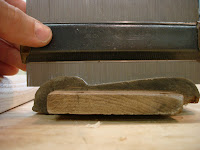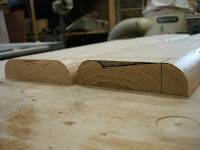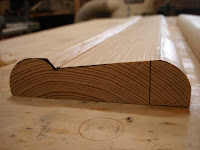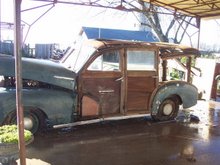
For the rail that runs the length of the car just below the windows, it was necessary to start by recreating the profile without the use of a shaper knife specially cut for this shape.
Begin by using a profile guide like the one shown here to copy the shape from a good cross section of the original stock. You can also trace the profile onto a piece of thick card stock.
Once you have the profile, dimension the stock for the left and rig

ht sides. Use the profile gauge to copy an outline onto the new stock. Take into account the shape you copy onto the new stock will be slightly smaller than the actual shape , so be sure not to remove the line, but work right up to the line.
At this point using router bits and the table saw, work your way up to the line. Try to keep in mind what cuts will need to be made and do not cut away some part of the profile you will need to register against the fence for a later cut. Try to think a few steps ahead.
It is not important to follow the profile exactly, but each cut

should touch the line you have drawn at some point.
Once you have the shape roughed out, using a block plane, take off the remaining peaks, working your way down to the profile line. Try to make long, even passes down the length of the piece to ensure a consistent shape.Finally a few c

abinet scrapers and some sanding should yield pretty good results.


